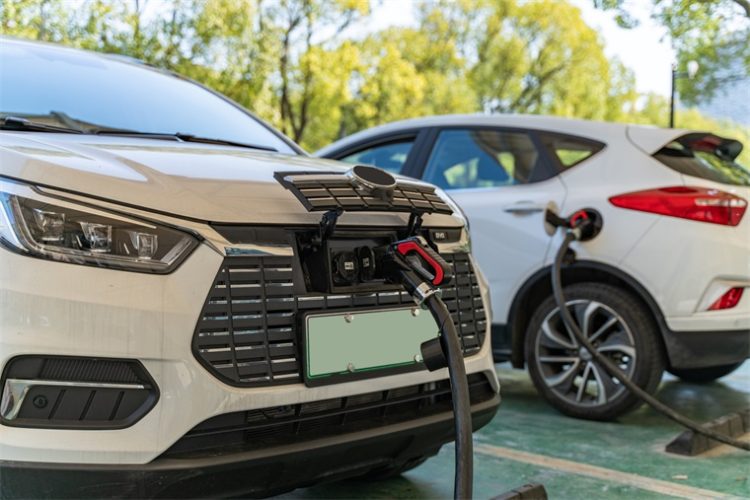The global push toward a sustainable future has reached a critical juncture, driven by the urgent need to address climate change, reduce pollution, and mitigate the depletion of natural resources. Central to this revolution are two game-changing technologies: electric vehicles (EVs) and clean energy. These innovations have the potential to not only transform specific industries but also to reshape the way we approach sustainability at a global scale. However, while the growth of electric mobility and the shift toward renewable energy are seen as pivotal in achieving a low-carbon economy, the question remains: Can the combined forces of electric vehicles and clean energy create a truly revolutionary shift in overall environmental sustainability?
In this article, we will explore how the integration of electric vehicles with clean energy can drive a paradigm shift in sustainability. We’ll dive into their synergistic potential, the challenges that need to be overcome, and whether these technologies can truly lead to a transformative change in our global environmental impact.
1. The Promise of Electric Vehicles and Clean Energy: A Symbiotic Relationship
To understand the revolutionary potential of electric vehicles and clean energy, it’s important to first recognize how these two elements are interlinked and how their integration can lead to significant improvements in environmental sustainability.
The Role of Electric Vehicles in Environmental Sustainability
Electric vehicles, once seen as a niche market, have rapidly become a central component of efforts to decarbonize the transportation sector, which is responsible for nearly 14% of global greenhouse gas emissions. By eliminating tailpipe emissions, EVs offer a clear route to reducing pollution, particularly in urban environments.
- Zero Emissions in Operation: Unlike conventional internal combustion engine (ICE) vehicles, EVs produce no direct emissions from their operation. This means that, when deployed at scale, electric vehicles can significantly reduce air pollution, especially in cities where traffic congestion and emissions are a major concern.
- Lower Lifecycle Emissions: Even when accounting for the emissions associated with battery production and electricity generation, EVs typically generate 30% to 50% fewer emissions over their lifecycle compared to gasoline or diesel vehicles, depending on the region’s energy mix. The more the grid shifts toward renewable sources, the greener the EV becomes.
Clean Energy: A Path to Decarbonizing the Power Sector
The energy sector is one of the largest sources of carbon emissions globally, contributing nearly 75% of all greenhouse gas emissions from human activity. Transitioning from fossil fuels to clean, renewable energy sources is therefore essential to achieving overall environmental sustainability.
- Solar, Wind, and Hydropower: These energy sources produce zero emissions and are becoming increasingly cost-effective, making them the cornerstone of the clean energy revolution. As technology advances and costs decrease, clean energy is steadily replacing coal, oil, and natural gas in electricity generation, paving the way for a more sustainable energy system.
- Energy Storage: One of the key challenges with renewable energy sources like solar and wind is their intermittency. As these technologies become more widespread, energy storage solutions—such as batteries, hydropower, and smart grids—will be critical in ensuring that renewable energy can be available on-demand to power both electric vehicles and other sectors of the economy.
The Synergy Between EVs and Clean Energy
The most significant opportunity for environmental transformation lies in the integration of electric vehicles and clean energy. When EVs are charged using renewable energy, the emissions associated with their operation decrease dramatically, bringing their total environmental impact close to zero.
- Green Charging: In regions where the power grid relies heavily on renewable energy, EVs can be charged with clean electricity, further reducing their carbon footprint. For example, a solar-powered charging station can charge electric vehicles using only the energy from the sun, creating a completely sustainable transportation system.
- Vehicle-to-Grid (V2G): A promising technology in this ecosystem is Vehicle-to-Grid (V2G), where EVs are not just consumers of electricity but also act as energy storage devices. This technology allows EVs to feed stored energy back into the grid, helping to balance fluctuations in renewable energy generation and contributing to grid stability.
- Decentralized Energy Networks: The combination of EVs and clean energy opens the door for decentralized energy networks, where individuals, communities, and businesses can generate and store their own energy. This reduces dependency on centralized fossil-fuel-based power systems and helps create more resilient, sustainable local energy economies.
2. Can This Combination Lead to a Revolutionary Shift in Sustainability?
The combination of electric vehicles and clean energy presents a promising vision for a future that is not only carbon-neutral but also fundamentally different from the current fossil fuel-based system. But for this vision to become a reality, several key challenges must be addressed.
1. Transitioning the Grid to 100% Renewable Energy
For electric vehicles to play their part in a revolutionary environmental shift, the power grid must also transition from fossil fuels to renewable energy. Currently, many regions still rely on coal, natural gas, and oil for a significant portion of their electricity generation.
- Global Shifts in Energy Production: While renewable energy adoption is growing rapidly, achieving a 100% clean energy grid on a global scale will take time. This requires massive investments in renewable energy infrastructure, energy storage, and grid modernization to accommodate the increased demand for clean electricity driven by the adoption of electric vehicles.
- Policy Support: Governments will need to implement policies and incentives that encourage the growth of renewable energy and the electrification of the transportation sector. Policies such as carbon pricing, renewable energy targets, and EV incentives are essential for accelerating the adoption of both EVs and clean energy.
2. Addressing Battery Production and Sustainability
While EVs are emissions-free during operation, their environmental impact is not entirely without concern. The production of lithium-ion batteries—critical for EVs—requires the extraction of minerals like lithium, cobalt, and nickel, which can lead to environmental degradation and human rights concerns in some regions.
- Sustainable Mining Practices: To make the EV revolution truly sustainable, we must address the environmental impact of mining. This includes adopting more ethical, sustainable mining practices and finding ways to recycle EV batteries at the end of their life cycle to reduce dependence on newly mined resources.
- Battery Innovation: Advances in battery technology, such as the development of solid-state batteries, could improve the efficiency, longevity, and sustainability of EV batteries, reducing their overall environmental impact.
3. Infrastructure Development
The widespread adoption of electric vehicles requires a robust charging infrastructure. While this infrastructure is already growing, many regions still lack sufficient charging stations, particularly in rural or less-developed areas. Ensuring that EVs can be easily charged is critical to achieving mass adoption.
- Global Investment: Governments and private sector players will need to invest in charging networks, particularly fast-charging stations, to make EVs more accessible to the general public. Furthermore, smart charging solutions will be necessary to ensure that EVs are charged efficiently and in ways that support the wider grid.
4. Ensuring Equity in the Green Transition
One of the significant challenges in the shift to sustainable mobility and clean energy is ensuring that the transition is inclusive and equitable. Access to electric vehicles and renewable energy technologies must be extended to all populations, including low-income communities and developing countries.
- Affordable Clean Technology: Efforts to lower the cost of EVs and solar panels will be crucial to ensuring that sustainability is not a privilege for the wealthy but a shared benefit for all. Additionally, international cooperation will be needed to ensure that developing nations can leapfrog traditional fossil fuel infrastructure and jump straight into sustainable energy solutions.

3. A Revolutionary Shift Toward Sustainable Development?
The integration of electric vehicles with clean energy has the potential to catalyze a revolutionary shift in environmental sustainability. Together, these technologies can:
- Reduce carbon emissions from the transportation sector and energy production.
- Improve air quality in urban areas.
- Enable energy independence through decentralized, renewable-powered systems.
- Facilitate the decarbonization of industries and sectors previously reliant on fossil fuels.
However, achieving this shift will require concerted action from governments, industries, and societies to overcome the challenges of transitioning the grid, addressing battery sustainability, and building the necessary infrastructure. While the future is promising, it is clear that the road to a truly sustainable world is complex and requires systemic change across multiple sectors.
4. Conclusion: A Transformational Future?
Electric vehicles and clean energy technologies have the potential to revolutionize our approach to sustainability and play a significant role in the fight against climate change. But for this vision to be realized, we must continue to accelerate progress in these areas while addressing challenges like energy grid modernization, battery production, and infrastructure development.
As we move toward carbon neutrality, it’s clear that the integration of EVs and renewable energy offers a path to a greener, cleaner, and more sustainable future—one where we don’t just address the symptoms of climate change but actively reshape the systems that have contributed to its rise.











































